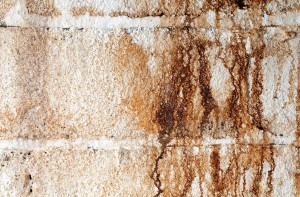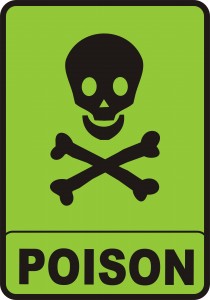
Chimney mold can cause serious respiratory problems as well as other health concerns. Watching for telltale signs of a chimney leak can help you prevent mold from happening.
Do you know why molds are growing in your chimney? Are you curious as to why it poses a risk to your health and your home? We from Jack Pixley Sweeps would like to give you an overview based on the EPA guide on what mold really is and how it can affect your home.
General Description
When water leaks into your chimney, it creates a lot of problems involving the structure of your chimney and your house in general, and more importantly, your health. One very common result of water inside the chimney is the growth of mold. Usually, molds need moisture to reproduce and thrive. You can find mold spores on leaf debris as well as the damp environment of your chimney. They come in all sorts of colors like green, brown and black. It can have a distinct dank smell to it, too.
The most common cause of mold is water but they can come from different areas and situations, too. When there is water in damp areas, it should be cleaned within 24-48 hours to prevent creating the perfect environment for mold to flourish in.
How can you tell if you have been affected by mold?
You will know when mold is already starting to invade your homes when you notice you or any of the members of your family manifesting these things:
- Allergic reactions
- Nasal congestion
- Headache
- Cough and colds
- Eye irritation
- Infections in the throat or skin
If you see or feel any of the above mentioned symptoms, consult your doctor and have it treated as soon as possible. Don’t wait for your condition to become more serious.
How to prevent mold from forming?
One of many tips our CSIA-certified professionals will give you is to have your chimney inspected and cleaned annually. If you have a dehumidifier then this will make our job a lot easier because you can control the humidity inside the home and in areas prone to mold growth. Also, if you don’t have one yet, consider having a chimney cap installed to prevent water from coming in. You also need to waterproof your chimney with a waterproofing sealant and make sure your flue liner is intact.
The most important thing to do to prevent mold growth is ensuring that your chimney is properly cared for and maintained. Give us a call and we can tell you more about mold and how we can get rid of it. We guarantee that our services are worth your time and money. We have been serving almost 100,000 satisfied customers in the greater Minneapolis area for 35 years now. Our name is definitely something you can trust!
Creosote Is Dirty And Dangerous
Most of the time, when chimney professionals like Jack Pixley Sweeps bring up the subject of creosote, we’re talking about fire safety. And there’s a good reason for that: Excessive creosote buildup — particularly if those creosote deposits develop into second or third stage creosote — can lead to a serious fire hazard.
But that’s not the only reason creosote buildup is dangerous, and why regular chimney sweeping is an important part of safer chimney use. Creosote itself — and the various chemicals that make it up — has been shown to be toxic.

Creosote exposure can cause skin irritations, as well as breathing difficulties.
Creosote Development
Several different materials get dubbed creosote, including the dark liquid used to treat commercial lumber materials like railroad ties. The creosote we’re talking about is a chemical deposit that results from burning wood in a heating appliance. Gases rise in the chimney connected to that appliance as the wood burns, and the cooler flue causes condensation, resulting in creosote build-up.
The coal tar creosote used in wood treatment and the creosote in your flue do have something important in common, other than their descriptor: People should avoid prolonged direct exposure to either, because both can be dangerous.
Short-term and prolonged exposure to the chemicals in creosote has been shown to result in an array of health issues, from skin and respiratory irritation to stomach pains and a potential worsening of asthma symptoms, according the Agency for Toxic Substances and Disease Registry.
Limiting Creosote Exposure
Exposure to chimney creosote can happen in different ways. Airborne particles can be breathed in. Chemicals can be absorbed through the skin or — a particular concern with kids — orally, if fingers that came into contact with creosote were absent-mindedly put in your mouth.
Limiting exposure to creosote starts with limiting the development of creosote to begin with, by burning the right materials. Burning green or wetter wood leads to a cooler fire and more creosote — and burning anything else, like trash, can contribute to creosote build-up and give off toxic chemicals, depending on the material.
Sticking to burning kiln-dried or seasoned cordwood only is your best bet. It provides the best, cleanest burn, and is smarter to use both short and long term.
The other key step is having a professional chimney technician clean your flue regularly. During a chimney sweeping appointment, Jack Pixley Sweeps technicians will remove creosote deposits from your flue, using specially designed tools and vacuums to make sure the mess is completely confined and removed. Our technicians are trained to safely handle and safely dispose of creosote, so you don’t have to come into contact with it.
If you want to know more about creosote — and limiting and removing it from your chimney system — give Jack Pixley Sweeps a call. We’re always happy to help our clients!


